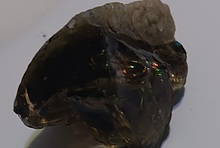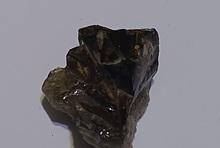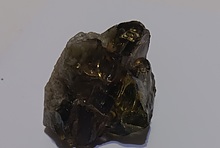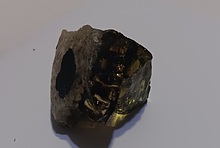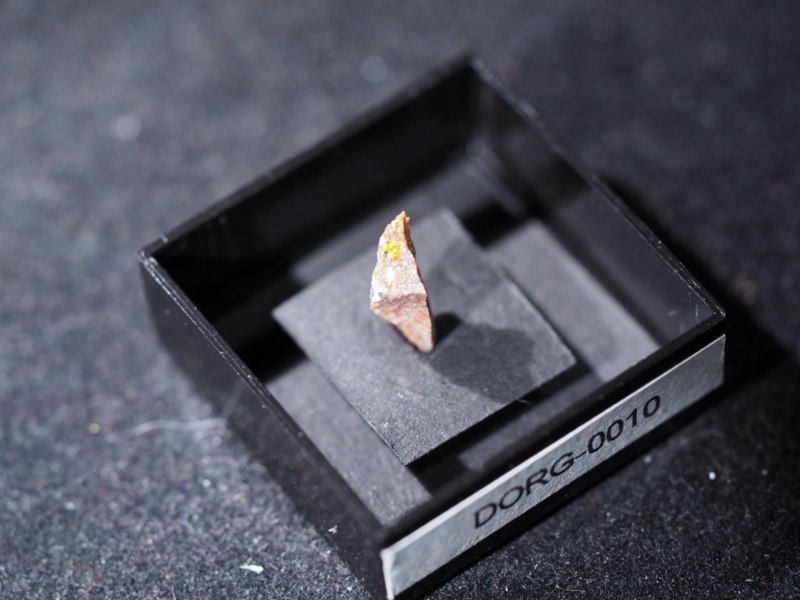Home PageAbout MindatThe Mindat ManualHistory of MindatCopyright StatusWho We AreContact UsAdvertise on Mindat
Donate to MindatCorporate SponsorshipSponsor a PageSponsored PagesMindat AdvertisersAdvertise on Mindat
Learning CenterWhat is a mineral?The most common minerals on earthInformation for EducatorsMindat ArticlesThe ElementsThe Rock H. Currier Digital LibraryGeologic Time
Minerals by PropertiesMinerals by ChemistryAdvanced Locality SearchRandom MineralRandom LocalitySearch by minIDLocalities Near MeSearch ArticlesSearch GlossaryMore Search Options
The Mindat ManualAdd a New PhotoRate PhotosLocality Edit ReportCoordinate Completion ReportAdd Glossary Item
Mining CompaniesStatisticsUsersMineral MuseumsClubs & OrganizationsMineral Shows & EventsThe Mindat DirectoryDevice SettingsThe Mineral Quiz
Photo SearchPhoto GalleriesSearch by ColorNew Photos TodayNew Photos YesterdayMembers' Photo GalleriesPast Photo of the Day GalleryPhotography
╳Discussions
💬 Home🔎 Search📅 LatestGroups
EducationOpen discussion area.Fakes & FraudsOpen discussion area.Field CollectingOpen discussion area.FossilsOpen discussion area.Gems and GemologyOpen discussion area.GeneralOpen discussion area.How to ContributeOpen discussion area.Identity HelpOpen discussion area.Improving Mindat.orgOpen discussion area.LocalitiesOpen discussion area.Lost and Stolen SpecimensOpen discussion area.MarketplaceOpen discussion area.MeteoritesOpen discussion area.Mindat ProductsOpen discussion area.Mineral ExchangesOpen discussion area.Mineral PhotographyOpen discussion area.Mineral ShowsOpen discussion area.Mineralogical ClassificationOpen discussion area.Mineralogy CourseOpen discussion area.MineralsOpen discussion area.Minerals and MuseumsOpen discussion area.PhotosOpen discussion area.Techniques for CollectorsOpen discussion area.The Rock H. Currier Digital LibraryOpen discussion area.UV MineralsOpen discussion area.Recent Images in Discussions
Mineral PhotographyOlympus OM-D Em5 Mark II: High resolution shot mode
20th May 2015 20:54 UTCJean-Marc Johannet Manager
First of all, there is a perfect silent mode which allow you to shot without any vibration at all, first and rear curtains shutters are totally electronic in this mode. Some of the Lumix/Panasonic camera have also this feature but with a limitation about exposition wich cannot be longer than 1s, not enough for me which use very soft lightning and low ISO shooting.
With the Wifi connection and the Olympus Image Share software, you are able to control your camera from your tablet or your smartphone.
Without the use of silent mode but OK with anti-vibration mode (Electronic First Curtain Shutter), you could also control your camera directly from a PC via the software Olympus Capture.
The third mode for shooting which could interest micro-minerals photography is the High resolution mode.
With this mode the camera takes 8 pictures of the same scene moving the sensor by 0.5 px between each shot and complies the eight images into one high resolution one.
http://www.imaging-resource.com/PRODS/olympus-e-m5-ii/olympus-e-m5-iiTECH2.HTM
This mode needs a perfect immobility of the subject but what is more quiet than our minerals under our lenses !
If your exposure time is 2s, you will need to wait about 25 s to get an HR image.
This proustite is my first test with the 'High Resolution' shot mode available on the Olympus OM-D Mark II; There still some defaults but, to my point of view, more related to the lens used than to the shot mode.

20th May 2015 22:46 UTCTóth László
I have the EOS 70D since 3 weeks, but unfortunately SILENT MODE does not work...My old EOS 50D and EOS 5D MarkII are still better for macrophotography.
regards from Hungary: László
20th May 2015 23:35 UTCJolyon Ralph Founder

21st May 2015 08:10 UTCTóth László
with best regards: László
21st May 2015 08:24 UTCJolyon Ralph Founder
But for a cheaper option I also want to try the EOS M3, which has a 24 megapixel APS-C sensor with no mirror at all. Maybe a good solution?
21st May 2015 08:31 UTCJean-Marc Johannet Manager

21st May 2015 12:21 UTCPierre Clolus
Impressive result.
Full electronic shutter is already something to dream on as a crazy stacker, and with 40 Mpixels and the quality of the EM-D Em5 mkII this is trully a must have.
Well, unfortunately, I also have bought a 70D some months ago, with quite poor results.
Guess I will look for a second hand EM-D Em5 mkII too ;)
Kind regards
Pierre
21st May 2015 13:42 UTCJeff Weissman Expert
20th Jul 2015 21:25 UTCJean-Marc Johannet Manager
The lighting was made with three Jansjo LEDs with additional filters, cut in a daylight blue sheet.
The diffuser is a piece of a little bottle made with white plastic and used for a dairy product.
For the proustite photo, I've used a lens made for the old Nikon polarizing microscope POH-2. It is the Nikon U x10 NA=0.22 WD=16,4 mm. Technical data sheet speaking, it is not the best I own but I like its bokeh and the room given for lighting by the long WD.
I've taken a new HR photo, this time with an infinity corrected lens, the Nikon PLAN 10x/0.25 and with a Raynox DCR 150 as tube lens.
I'm not fully happy about noise managing in this picture but it is really amazing to browse among phosphuranylite crystals, they are so tiny things !
20th Jul 2015 21:31 UTCJolyon Ralph Founder
20th Jul 2015 21:58 UTCJean-Marc Johannet Manager
For those who don't imagine how tiny are these crystals, this is a view of the whole sample, mounted in a UE standard MM box (28x28 mm).
The field of view of the photo is on the top of the sample where it is yellow coloured.
20th Jul 2015 23:33 UTCRock Currier Expert

21st Jul 2015 13:35 UTCStephan Wolfsried Expert
Chapeau! Just for Info, I regard an APS-C Sensor being more appropriate than a full frame one, only the new Canon with 51 Megapixels could be an option. The reason is pixel density. Using the stabilization feature for moving the sensor slightly as You showede us makes an absolutely stable probe crucial. In most cases I found creeping isn't avoidable in total.
See also my article
http://www.mindat.org/article.php/2083/Setup+experiments+with+twin+bellows+and+a+Nikon+D810
Cheers Stephan
21st Jul 2015 14:05 UTCOwen Melfyn Lewis
I don't mean to criticise, but isn't the specimen out of focus? Enlarging the image it seems to me that the stacking method/process has failed to keep the image sharp across its depth and the only really sharp point of focus is about on the '00' in the specimen label.
Is this fair comment and why do you think it is?
21st Jul 2015 14:31 UTCJolyon Ralph Founder
21st Jul 2015 14:33 UTCJolyon Ralph Founder
21st Jul 2015 15:58 UTCOwen Melfyn Lewis
21st Jul 2015 20:48 UTCJean-Marc Johannet Manager
Hopefully, Jolyon has guided your eyes in the right direction...
Stephan, thanks for your kind comment.
Yes I think that the pixel density plays a big role in the final quality.
In HR mode, images are 7296x5472 pixels for a 17,3x13 mm sensor what means 422 pixels/mm.

22nd Jul 2015 15:28 UTCStephan Wolfsried Expert
Yes that is true, als long als the probe doesn't move at all. If the Probe creeps slightly the lateral shift of the Probe can be more than the Shift of the Sensor. My stacks have typically some 200 to 500 elements. Comparing the first with the last I always recognize creeping, sometimes more, sometimes less. As in the Olympus process the HD picture is generated sequential this boundary condition is crucial in my opinion.
Cheers Stephan
22nd Jul 2015 17:53 UTCGerhard Niklasch Expert
(@Stephan, for your information, this is a "false friend": the English word "probe" means either "Sonde" or "Untersuchung" in German.)
Cheers, Gerhard

23rd Jul 2015 04:53 UTCStephan Wolfsried Expert
Thanks for assistence.
Stephan
4th Oct 2015 08:30 UTCAccount Closed
And 12 megapixel sensor is sufficient for HD microphotoraphie and Olympus can be effective (without interpolation) that if the objective can provide useful optical information .
The resolution of 0.28 x10 is 1 micrometer and gives for a circular object of 2.4 mm a picture of 24 mm with a maximum resolution of 1,200 lines / mm.
The camera is never the problem if lighting is not enough.
Stephan has a system increasing the information density but diffraction stays.
4th Oct 2015 10:35 UTCJean-Marc Johannet Manager
At the normal resolution (4608x3456 px), pixels are distributed along the captor width (17,3mm), one each 3.7 µm (266 pixels per mm).
In the HR mode, the captor makes very little move (1/2 pixels each time) to take a 8 pictures which are stacked by the embeded software in the camera.
https://youtu.be/l0Cdpp40XIw
The resolution of the result (7296x5472 pixels) gives a "distribution" (it is not a physical one but a calculated one by stacking) with one pixel each 2.4 µm (422 px per mm).
Somehow, the captor by itself is filling the little gaps of information between each pixel.
By the way, following the launch of the new OM D Em-10 Mark II, Olympus annouces several upgrades for EM-1 and EM-5 Mark II interesting for mineral photography.
- Firmware upgrade, Version 4.0 for Olympus OM-D E-M1 provides
Focus Stacking mode and Focus Bracketing mode for advanced macro shooting.Focus stacking (8 images) will be available with several lenses with the wonderful 60 mm Macro among them.
With this upgrade, silent mode will be also avalaible for the E-M1 as it is already for the E-M5 Mark II but it seems as announced, not the HR mode.
- Firmware Version 2.0 for OM-D E-M5 Mark II and Olympus Capture Version 1.1
to meet the demand from professional photographers will also be released.
Focus bracketing will be avalaible for the E-M5 Mark II. The new version of the Olympus Capture will enhance the camera control from the computer and allow the use of the silent mode, keystone compensation (I'm impatient to use this feature for stereo photography without touching the camera), HR mode for the EM-5 mark II,...
http://www.olympus-global.com/en/news/2015b/nr150915omde.jsp
http://www.getolympus.com/us/en/olympuscapture
4th Oct 2015 13:45 UTCAccount Closed
This HD technic is interessant when diffraction is not a problem (with very good objective).
Diffraction give limitation for us. 4 Mpixel is ever the same if you capture all the photograph with a 10x 0.28, 5x 0.14 and x2 0.055.
Bellows are not very efficient if you don't capture all image.....
A good system must capture all the image with a good stigmatism. In this case your limitation is diffraction.
Stephan's system is interessant because he seems capture all the image with all information. But objective are not used as constructor's recommandations but that's good but some others possibility are possible (happyness)
JMJ a 12 Mpix can done this work for microscopy.
On your image, it's not enough sharp. Limitation is not done by diffraction. As said by stephan 200-500 image is normal. For 20x, 500-1000 images are usefull.
21st Nov 2015 20:23 UTCJean-Marc Johannet Manager
-------------------------------------------------------
> By the way, following the launch of the new OM D
> Em-10 Mark II, Olympus annouces several upgrades
> for EM-1 and EM-5 Mark II interesting for mineral
> photography.
>
> - Firmware upgrade, Version 4.0 for Olympus OM-D
> E-M1 provides
> Focus Stacking mode and Focus Bracketing mode for
> advanced macro shooting.Focus stacking (8 images)
> will be available with several lenses with the
> wonderful 60 mm Macro among them.
> With this upgrade, silent mode will be also
> avalaible for the E-M1 as it is already for the
> E-M5 Mark II but it seems as announced, not the HR
> mode.
>
> - Firmware Version 2.0 for OM-D E-M5 Mark II and
> Olympus Capture Version 1.1
> to meet the demand from professional photographers
> will also be released.
> Focus bracketing will be avalaible for the E-M5
> Mark II. The new version of the Olympus Capture
> will enhance the camera control from the computer
> and allow the use of the silent mode, keystone
> compensation (I'm impatient to use this feature
> for stereo photography without touching the
> camera), HR mode for the EM-5 mark II,...
>
> http://www.olympus-global.com/en/news/2015b/nr1509
> 15omde.jsp
> http://www.getolympus.com/us/en/olympuscapture
The firmware release for both the EM-1 and the EM-5 Mark II will be available on November 26th.
http://www.olympus.co.jp/jp/info/2015b/if151120omdj.jsp

11th Jan 2018 22:52 UTCEric von Werstak
-------------------------------------------------------
> I'm not a specialist about diffraction but what I
> know it that the HR mode on the EM-5 Mark II
> allows the increase of the pixel density and, even
> with this, we are still far away from the limit of
> our optic systems.
> At the normal resolution (4608x3456 px), pixels
> are distributed along the captor width (17,3mm),
> one each 3.7 µm (266 pixels per mm).
> In the HR mode, the captor makes very little move
> (1/2 pixels each time) to take a 8 pictures which
> are stacked by the embeded software in the
> camera.
> https://youtu.be/l0Cdpp40XIw
> The resolution of the result (7296x5472 pixels)
> gives a "distribution" (it is not a physical one
> but a calculated one by stacking) with one pixel
> each 2.4 µm (422 px per mm).
> Somehow, the captor by itself is filling the
> little gaps of information between each pixel.
>
> By the way, following the launch of the new OM D
> Em-10 Mark II, Olympus annouces several upgrades
> for EM-1 and EM-5 Mark II interesting for mineral
> photography.
>
> - Firmware upgrade, Version 4.0 for Olympus OM-D
> E-M1 provides
> Focus Stacking mode and Focus Bracketing mode for
> advanced macro shooting.Focus stacking (8 images)
> will be available with several lenses with the
> wonderful 60 mm Macro among them.
> With this upgrade, silent mode will be also
> avalaible for the E-M1 as it is already for the
> E-M5 Mark II but it seems as announced, not the HR
> mode.
>
> - Firmware Version 2.0 for OM-D E-M5 Mark II and
> Olympus Capture Version 1.1
> to meet the demand from professional photographers
> will also be released.
> Focus bracketing will be avalaible for the E-M5
> Mark II. The new version of the Olympus Capture
> will enhance the camera control from the computer
> and allow the use of the silent mode, keystone
> compensation (I'm impatient to use this feature
> for stereo photography without touching the
> camera), HR mode for the EM-5 mark II,...
>
> http://www.olympus-global.com/en/news/2015b/nr1509
> 15omde.jsp
> http://www.getolympus.com/us/en/olympuscapture

11th Jan 2018 23:03 UTCEric von Werstak
Do you have any photos using SW and LW uv lighting on minerals with the ME-10? I am interested purchasing a camera. I am upgrading from an Olympus FE but I need a more controllable camera that allows close ups an UV work. For attachments I am looking at the OMD 30mm F3.5 macrolens plus a UV HMC filter, thanks in advance for advice given

12th Jan 2018 02:59 UTCEric von Werstak
-------------------------------------------------------
> I'm not a specialist about diffraction but what I
> know it that the HR mode on the EM-5 Mark II
> allows the increase of the pixel density and, even
> with this, we are still far away from the limit of
> our optic systems.
> At the normal resolution (4608x3456 px), pixels
> are distributed along the captor width (17,3mm),
> one each 3.7 µm (266 pixels per mm).
> In the HR mode, the captor makes very little move
> (1/2 pixels each time) to take a 8 pictures which
> are stacked by the embeded software in the
> camera.
> https://youtu.be/l0Cdpp40XIw
> The resolution of the result (7296x5472 pixels)
> gives a "distribution" (it is not a physical one
> but a calculated one by stacking) with one pixel
> each 2.4 µm (422 px per mm).
> Somehow, the captor by itself is filling the
> little gaps of information between each pixel.
>
> By the way, following the launch of the new OM D
> Em-10 Mark II, Olympus annouces several upgrades
> for EM-1 and EM-5 Mark II interesting for mineral
> photography.
>
> - Firmware upgrade, Version 4.0 for Olympus OM-D
> E-M1 provides
> Focus Stacking mode and Focus Bracketing mode for
> advanced macro shooting.Focus stacking (8 images)
> will be available with several lenses with the
> wonderful 60 mm Macro among them.
> With this upgrade, silent mode will be also
> avalaible for the E-M1 as it is already for the
> E-M5 Mark II but it seems as announced, not the HR
> mode.
>
> - Firmware Version 2.0 for OM-D E-M5 Mark II and
> Olympus Capture Version 1.1
> to meet the demand from professional photographers
> will also be released.
> Focus bracketing will be avalaible for the E-M5
> Mark II. The new version of the Olympus Capture
> will enhance the camera control from the computer
> and allow the use of the silent mode, keystone
> compensation (I'm impatient to use this feature
> for stereo photography without touching the
> camera), HR mode for the EM-5 mark II,...
>
> http://www.olympus-global.com/en/news/2015b/nr1509
> 15omde.jsp
> http://www.getolympus.com/us/en/olympuscapture
Thanks, Jean-Marc, Have you tried any fluorescent photography with it?
12th Jan 2018 21:49 UTCJean-Marc Johannet Manager
I'm going to make a test asap and come back herre to show the result.
13th Jan 2018 19:42 UTCJean-Marc Johannet Manager
Speed was rather long (1.6s), so more than 12 s for one shot and as I have some vibration issues with my set-up I think some blur on this photo come from that.

22nd May 2018 00:29 UTCMark Cole

22nd May 2018 04:46 UTCDoug Daniels
22nd May 2018 10:16 UTCVolker Betz 🌟 Expert
I see this UV-Picture with interest. Indeed reflection of blue-violet light from the UV-source is always present. It can be surpressed by filtering the spectral range in post processing. Se attached picture. This was processed with Helicon Filter.
Regerds
Volker
22nd May 2018 22:43 UTCJean-Marc Johannet Manager
My UV light is very simple, a flashlight modified by my friend Pierre Le Roch, he replaced the bulb by an UV(Black light) 5mm LED.

14th Sep 2018 23:32 UTCZbynek Burival Expert
New OM-D1 MkII allows similar functionality but much higher resolution - with RAW about 80 megapixels! Mind you, the diffraction or sensor cell size is not that big issue here as the final shot is made by pixel-shift, so technically its made of several shots with "just" 20 megapixel resolution.
I saw (and did) couple tests, so far it seems that the final "supersize" photo is little softer then the normal resolution (tested with Zuiko 60/2,8). However, it is still perfectly fine and quite good sharpness. What I saw from online tests, many pro and extremely expensive full-frames with high-end lenses will have serious trouble to deliver the same quality. And for macro, the electronic shutter and broader DOF are really a huge advantage.
The other pleasant thing is the option to make automatic stack sequences up to 999 photos with variable step (predefined in camera 1-10). 10 steps can be automatically stacked in camera, unfortunately only to JPEG. More photos need manual stacking in PC. You can not use hi-res mode (80 megapixels) and focus stacking mode together, unfortunately.




Mindat.org is an outreach project of the Hudson Institute of Mineralogy, a 501(c)(3) not-for-profit organization.
Copyright © mindat.org and the Hudson Institute of Mineralogy 1993-2024, except where stated. Most political location boundaries are © OpenStreetMap contributors. Mindat.org relies on the contributions of thousands of members and supporters. Founded in 2000 by Jolyon Ralph.
Privacy Policy - Terms & Conditions - Contact Us / DMCA issues - Report a bug/vulnerability Current server date and time: April 19, 2024 13:51:24
Copyright © mindat.org and the Hudson Institute of Mineralogy 1993-2024, except where stated. Most political location boundaries are © OpenStreetMap contributors. Mindat.org relies on the contributions of thousands of members and supporters. Founded in 2000 by Jolyon Ralph.
Privacy Policy - Terms & Conditions - Contact Us / DMCA issues - Report a bug/vulnerability Current server date and time: April 19, 2024 13:51:24




